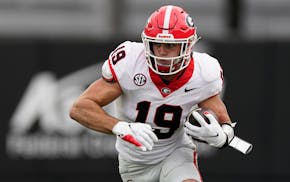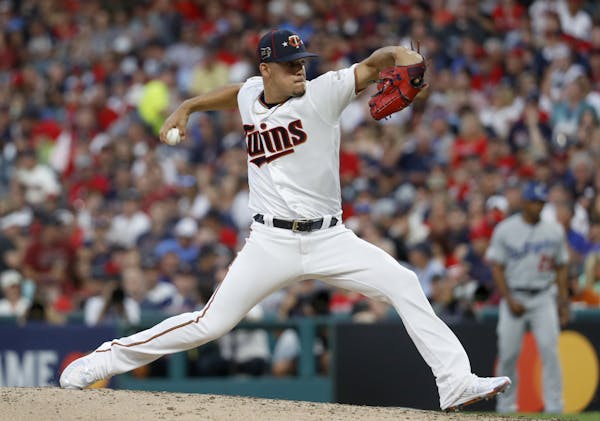You can think of a curse as some sort of supernatural phenomenon foisted on a person or entity as a result of a perceived transgression … or you can look at it as a series of facts interpreted in a certain way.
And certainly there is an element of self-fulfilling prophecy either way.
Were the Cubs cursed all those years by a billy goat before finally winning the World Series in 2016? Are the Vikings somehow cursed to never win a Super Bowl? Is the Wolves' luck in the NBA Draft lottery related to some sort of curse?
It all depends on how you look at it and what you want to believe.
For a more interesting curse, though, let me turn your attention to the "Curse of the Home Run Derby," whereby many MLB fans worry that participating in the home run contest at the All-Star break will doom participants to a relatively poor second half of the season.
This one is fascinating because there at least seems to be a level of Twins-related data to support it … but the numbers must be weighed contextually instead of in a vacuum, diminishing the "curse" notion.
From the Twins perspective, we have a team not just leading the majors in home runs (166) at the break, but also on pace to hit 302 for the season to shatter the all-time record.
But the power is pretty spread out, with 10 guys already in double-figures. There wasn't an obvious player to choose from the Twins for the home run derby, and none was chosen. Eddie Rosario, who probably had the best chance to make it, injured his ankle in late June.
If you believe in the derby curse, you possibly breathed a sigh of relief at this temporary setback for Eddie.
And here's the thing: I went back and looked at every Twins player to participate in the Home Run Derby from 1985-present, and every single one of them fared worse in the second half than they did in the first half in two key categories: OPS and home run rate. Here's the list (H/T to Puckett's Pond for the handy recent slide show of all the Twins who were in the derby).
(Numbers are pre/post break OPS and pre/post AB per home run)
*Tom Brunansky, 1985: .867 vs. .643 and 16.5 vs. 31.8
* Gary Gaetti, 1989: .745 vs. .575 and 21.0 vs. 54.0
*Torii Hunter, 2002: .911 vs. .780 and 16.9 vs. 24.9
*Justin Morneau, 2007: .944 vs. .702 and 13.4 vs. 38.3
*Morneau, 2008: .903 vs. .831 and 26.1 vs. 28.7
*Joe Mauer 2009: 1.069 vs. .998 and 16.1 vs. 21.7
*Brian Dozier, 2014 (pictured above): .777 vs. .739 and 20.0 vs. 47.6
*Miguel Sano, 2017: .906 vs. .742 and 14.3 vs. 17.6
You see Morneau in 2008 and Mauer in 2009 were pretty close production-wise in the second half (and Mauer, in particular, was still excellent). But there are a lot of sharp declines, lending credence to the idea that the derby has some sort of impact on players. Maybe it does really alter their swings or creates fatigue? Maybe the time commitment makes it seem like players don't really get a break?
Where we can't just rely on the data and go all-in on the "curse," though, is in this: Most players picked for the derby are chosen because they have had exceptional first half performances, and some sort of regression in the second half is natural.
But if the 2019 Twins keep bashing away after the break — while derby champ Pete Alonso and other sluggers slump — maybe we will have to think even harder about this curse.

